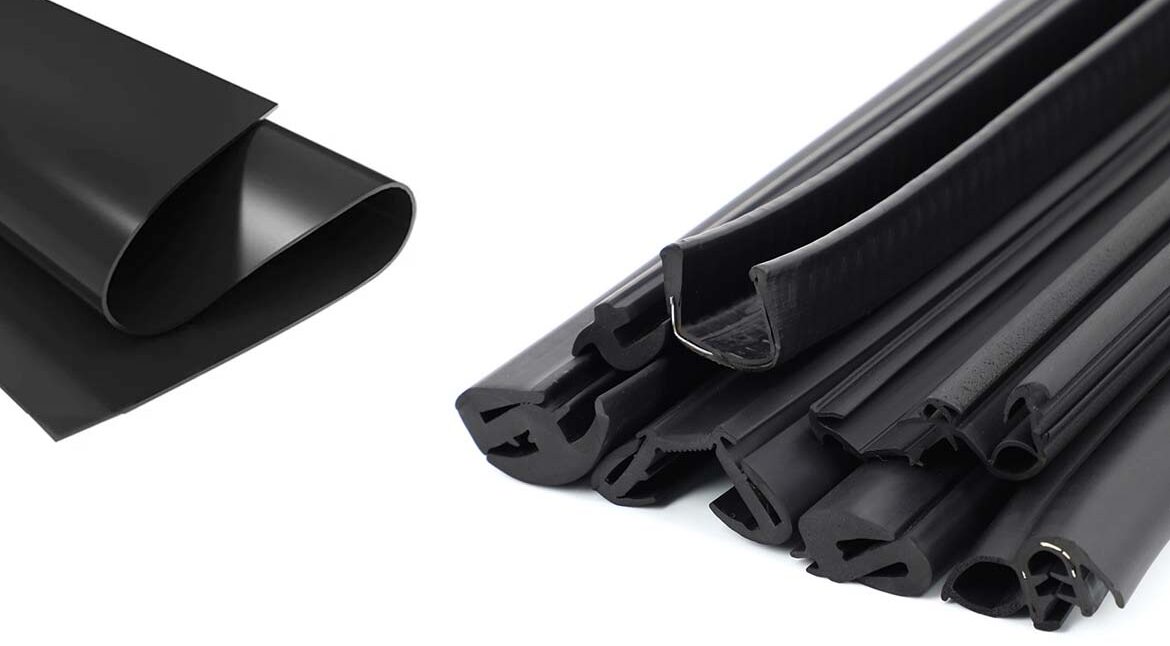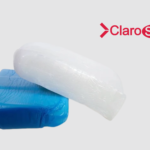Why is EPDM Rubber a Game-Changer
Understanding EPDM Rubber
Ethylene Propylene Diene Monomer (EPDM) rubber is a versatile synthetic rubber widely used across various industries due to its remarkable properties. Known for its exceptional resistance to weathering, ozone, and chemicals, EPDM rubber has become a material of choice in applications that demand durability and longevity. In this blog, we will explore what EPDM rubber is, its key features, and its uses that make it indispensable in both; industrial and consumer applications.
What is EPDM Rubber?
EPDM rubber is a type of synthetic rubber that belongs to the M-Class of rubbers, a classification that includes rubbers with a saturated chain of the polyethylene type. It is composed of- ethylene, propylene, and a diene component, which allows for its sulfur vulcanisation. The combination of these three monomers gives EPDM its unique properties, making it one of the most flexible and durable synthetic rubbers available.
Key Features of EPDM Rubber
Weather Resistance:
One of the most notable features of EPDM rubber is its outstanding resistance to weathering. It can withstand prolonged exposure to sunlight, ozone, UV radiation, and extreme temperatures without deteriorating. This makes EPDM rubber an ideal material for outdoor applications, where other materials might fail over time due to environmental exposure.
Temperature Tolerance:
EPDM rubber exhibits excellent temperature stability, maintaining its flexibility and performance in both hot and cold conditions. It can operate effectively in temperatures ranging from -40°C to 150°C (-40°F to 302°F), making it suitable for applications in harsh environments.
Chemical Resistance:
EPDM rubber is resistant to a wide range of chemicals, including acids, alkalis, and solvents. This chemical resistance makes it valuable in industries where exposure to harsh chemicals is common, such as in the manufacturing of hoses and gaskets.
Water and Steam Resistance:
Another key feature of EPDM rubber is its resistance to water and steam. It does not absorb water and remains stable in humid conditions, making it an excellent choice for sealing and insulation applications in both residential and industrial settings.
Electrical Insulation:
EPDM rubber is also an effective electrical insulator, which means it does not conduct electricity. This property is particularly important in applications where electrical insulation is required, such as in the production of cable sheathing and electrical gaskets.
Uses of EPDM Rubber
EPDM rubber’s unique combination of features makes it suitable for a wide range of applications across various industries. Some of the most common uses include:
Automotive Industry:
EPDM rubber is extensively used in the automotive industry, particularly in the manufacturing of seals, weatherstripping, and hoses. Its ability to withstand extreme temperatures and resist UV radiation makes it ideal for use in car door seals, window seals, and coolant hoses. Additionally, its resistance to brake fluids and other chemicals ensures that EPDM rubber components perform reliably under the hood.
Construction Industry:
In the construction industry, EPDM rubber is commonly used in roofing membranes due to its durability and weather resistance. EPDM roofing membranes are known for their long lifespan and ability to withstand harsh weather conditions, including heavy rain, snow, and UV exposure. They are also easy to install and maintain, making them a popular choice for both commercial and residential buildings.
HVAC Systems:
EPDM rubber is a preferred material in HVAC (Heating, Ventilation, and Air Conditioning) systems, where it is used to manufacture seals, gaskets, and insulation components. Its resistance to temperature fluctuations and its ability to provide an airtight seal make it ideal for ensuring energy efficiency and preventing leaks in HVAC systems.
Electrical Industry:
Due to its excellent electrical insulating properties, EPDM rubber is widely used in the electrical industry. It is commonly used to manufacture cable insulation, gaskets, and other components that require reliable electrical insulation. Its resistance to heat and chemicals further enhances its suitability for electrical applications.
Industrial Applications:
EPDM rubber is also used in a variety of industrial applications, including the production of conveyor belts, hoses, and gaskets. Its resistance to abrasion, chemicals, and extreme temperatures makes it an ideal material for components that need to endure harsh industrial environments. Additionally, its flexibility and durability make it suitable for dynamic applications where movement and stress are involved.
Consumer Products:
Beyond industrial uses, EPDM rubber is found in many consumer products, including garden hoses, roofing membranes, and rubber flooring. Its non-toxic nature and resistance to environmental factors make it a safe and reliable material for products used in everyday life.
Leading Manufacturers of EPDM Rubber
Some of the top manufacturers of EPDM worldwide are:
Lanxess AG:
Lanxess is a leading speciality chemicals company with a strong portfolio in synthetic rubbers, including EPDM. Their Keltan® brand is one of the most recognised EPDM rubbers in the market, known for its high-quality standards and extensive application range.
ExxonMobil Chemical:
ExxonMobil Chemical is a major producer of synthetic rubbers, including EPDM. Their Vistalon™ EPDM is widely used in automotive, construction, and industrial applications due to its durability and resistance to weathering.
Dow Inc.: Dow is a global leader in materials science, and their Nordel™ EPDM rubber is highly regarded for its consistency, high performance, and versatility across a wide range of applications, including automotive, roofing, and seals.
Arlanxeo:
It is a subsidiary of Saudi Aramco. It specialises in the production of synthetic rubbers, including EPDM. The Keltan® brand under Arlanxeo offers a broad portfolio of EPDM grades tailored to various industrial needs.
JSR Corporation:
It is a leading chemical company in Japan, producing a range of synthetic rubbers, including EPDM. Their EPT™ brand is known for its high-quality standards and application in automotive parts, electrical insulation, and other demanding environments.
Sumitomo Chemical produces Esprene™:
It is a line of EPDM rubber widely used in automotive, industrial, and construction applications. Esprene™ is known for its excellent heat and weather resistance.
Mitsui Chemicals, Inc.:
They produce Mitsui EPT™, a well-known EPDM rubber brand that offers excellent heat, chemical, and weather resistance. It is used in various sectors, including automotive, construction, and electrical applications.
Lion Elastomers:
A North American manufacturer, specialising in synthetic rubbers, including EPDM. Their Royalene® EPDM is well-known for its high-performance characteristics and is used in automotive, roofing, and industrial applications.
Sabic (Saudi Basic Industries Corporation):
Sabic is one of the world’s largest petrochemical manufacturers, producing a wide range of chemical products, including synthetic rubbers. While Sabic primarily focuses on polyethylene, polypropylene, and other petrochemical products, they are integral to the supply chain of raw materials used in the production of EPDM rubber. Sabic’s influence in the petrochemical sector supports companies like Arlanxeo and others in producing high-quality EPDM rubber.
EPDM rubber’s remarkable properties make it an invaluable material in a wide range of applications, from automotive and construction to electrical and industrial uses. Its resistance to weathering, chemicals, and extreme temperatures ensures long-lasting performance and reliability in even the most challenging environments. Whether you’re looking for a material for seals, hoses, roofing, or insulation, EPDM rubber is a versatile and durable solution that stands the test of time.
As you consider materials for your next project, understanding the benefits of EPDM rubber can help you make informed decisions that enhance your product’s quality, durability, and efficiency.
Disclaimers:
Errors and Omissions:
The information on the Voraco website is for general informational purposes only. While we strive for accuracy, errors or omissions may occur. We do not guarantee the completeness or reliability of any information. Please verify any details before relying on them.
Fair Use:
Content on this website may include copyrighted material used under fair use for educational and informational purposes. If you believe your intellectual property rights are infringed, please contact us, and we will address the issue promptly.



